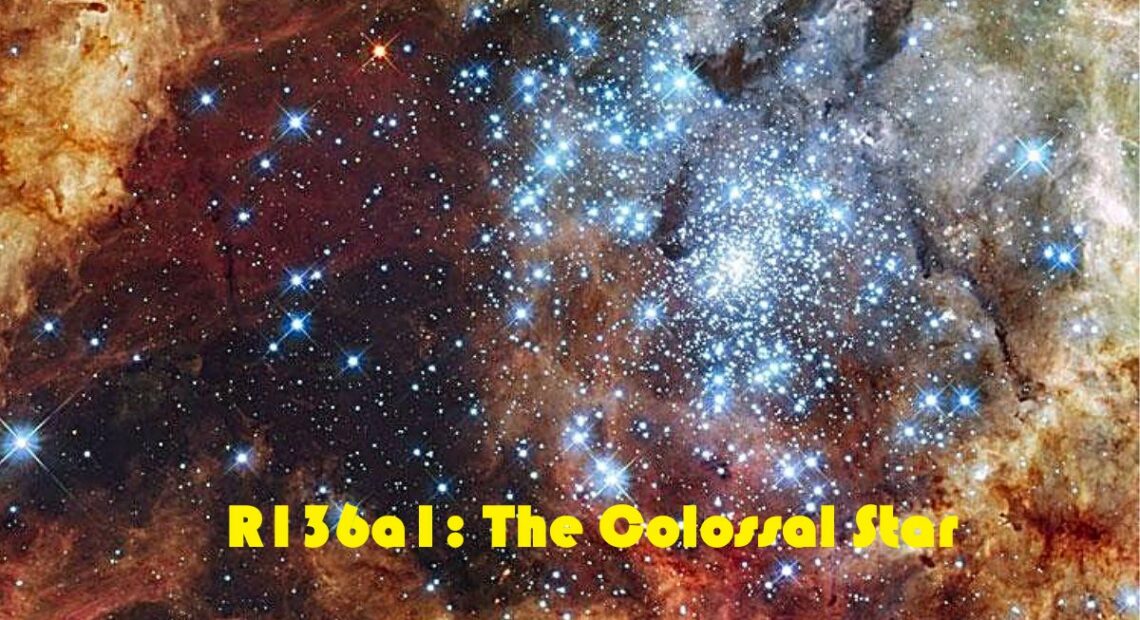R136a1: Unveiling the Colossal Beauty of the Most Massive Star

In the vast expanse of our universe, stars are the celestial wonders that captivate our imagination and shape the cosmos as we know it. Among these cosmic giants, one star stands out as the unrivaled heavyweight – R136a1. With a staggering mass of 300 times that of our Sun, R136a1 takes center stage as the most massive star discovered to date. In this blog, we will embark on a journey to explore the awe-inspiring magnificence of R136a1 and delve into its profound impact on the cosmos.
The Discovery of R136a1:
R136a1 was first identified in the year 2010 within the R136 star cluster, situated in the Tarantula Nebula, a region teeming with young, massive stars in the Large Magellanic Cloud, a satellite galaxy of the Milky Way. The discovery of this stellar behemoth was a momentous achievement, shedding light on the extreme conditions under which stars form and evolve.
Unraveling the Enigma of R136a1:
The size of R136a1 is truly mind-boggling, boasting a mass hundreds of times greater than our Sun. This supermassive star has a luminosity that outshines our Sun by an astonishing factor, making it one of the most brilliant objects in the universe. Its sheer mass places it in the upper echelons of star classifications, belonging to the elusive group of stars known as “hypergiants.”
Life Cycle of a Stellar Giant:
To truly grasp the significance of R136a1, we must explore the life cycle of such massive stars. Unlike our Sun, which will live for billions of years, R136a1’s lifespan is significantly shorter. Its immense mass accelerates nuclear fusion reactions within its core, causing it to burn through its fuel at an accelerated rate. Consequently, R136a1 is destined for a cataclysmic fate – a supernova explosion that will leave behind a remnant, possibly a black hole or a neutron star.
Cosmic Influence and Beyond:
Beyond their stunning luminosity and brief lifespans, massive stars like R136a1 play a pivotal role in the dynamics of their cosmic neighborhoods. They shape their surrounding environments through powerful stellar winds, ionizing radiation, and eventually, explosive supernovae. These events trigger the birth of new stars and influence the evolution of galaxies, leaving an indelible mark on the cosmos.
Studying R136a1: Challenges and Opportunities:
Studying such a distant and colossal object is no easy task. Astronomers and researchers employ an array of advanced telescopes and instruments to capture the faint signals emanating from this remote celestial body. With each observation, our understanding of R136a1 grows, offering invaluable insights into the fundamental processes governing the cosmos.
Conclusion:
R136a1, the most massive star known to humanity, reigns as a testament to the grandeur and complexity of the universe. Its sheer brilliance and astronomical significance leave us in awe of the forces that shape the cosmos. As we continue to explore the depths of space and uncover more celestial wonders, R136a1 will undoubtedly remain an icon of cosmic marvel and a source of inspiration for generations of astronomers to come. In the relentless pursuit of knowledge, the mysteries of the cosmos continue to unfold, and R136a1 stands as a shining beacon, inviting us to explore the vast unknowns of our magnificent universe.
Picture Courtesy: Google/images are subject to copyright








